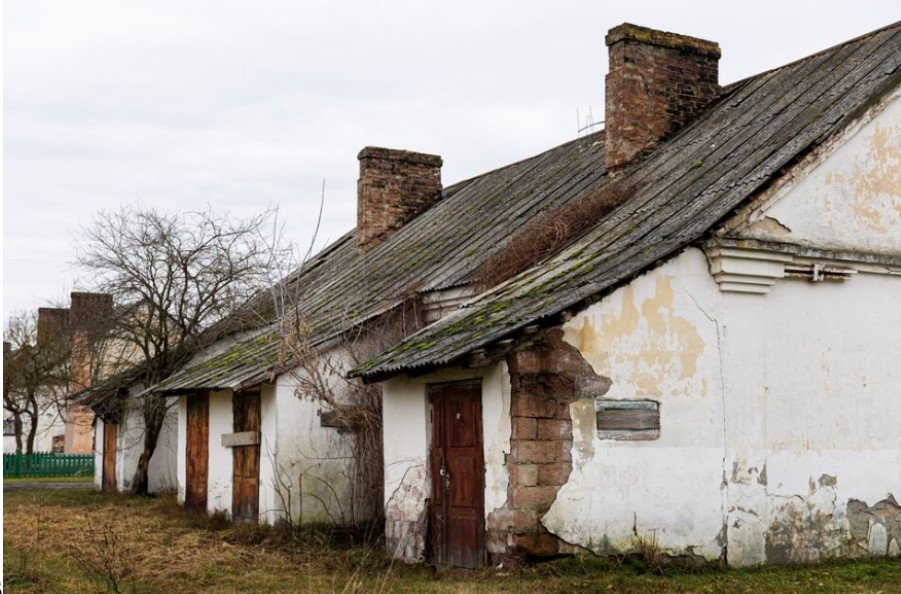Historic houses are more than just homes; they are living creations of cultural, social, and architectural records. Preserving those homes offers a tangible connection to the past, permitting us to apprehend and appreciate the life, craftsmanship, and layout alternatives of earlier generations.
These homes regularly showcase precise architectural patterns and techniques that are now not used in current creation, contributing to the diversity and richness of our constructed surroundings. Additionally, restoration and preservation are inherently sustainable practices, as they involve rebuilding old constructions with current systems, reducing waste and keeping assets.
Challenges of Restoring Historic Homes
Restoring historical homes is a complicated system that requires a sensitive stability between maintaining historical integrity and assembling modern dwelling requirements. Many historic homes suffer from structural issues because of age, neglect, or previous creation strategies. Addressing these issues requires careful evaluation and frequent, specialized recuperation techniques. Original substances together with wood, plaster, and brick want to be preserved or replicated appropriately, which can be difficult and expensive. Integrating present day amenities without compromising the historic individual of the home is a significant assignment, specifically for important regions like kitchens and toilets. Moreover, many historic homes are issued strict protection hints and regulations that dictate what adjustments can and cannot be made, requiring knowledge and careful planning.
Kitchen Remodeling Ideas for Historic Homes
The kitchen is often the heart of the home, and in historic houses, it is no different. Kitchen remodeling ideas in a historic home require thoughtful consideration to ensure that the new design harmonizes with the overall aesthetic of the house. Where possible, original features such as cabinetry, moldings, and hardware should be retained to add character and authenticity. If the original features are too damaged, consider replicating them with high-quality reproductions. Modern appliances should be integrated subtly so they do not overpower the historic feel of the kitchen, using built-in appliances with custom panels that match the cabinetry or vintage-style appliances that complement the period design.
Choosing materials that reflect the era of the home, such as marble or soapstone countertops and traditional ceramic or encaustic tiles for the backsplash, can enhance the historic charm. Creating a seamless blend of old and new by juxtaposing modern elements with historic features, like pairing contemporary lighting fixtures with antique wooden cabinets or a farmhouse sink, can be effective. Open shelving can also be a practical and visually appealing addition, using reclaimed wood or shelves that match the original cabinetry to maintain consistency with the historic aesthetic.
Kitchen Layouts for Historic Homes
Designing a kitchen layout that respects the historic nature of the home while providing modern functionality can be a challenging task. A galley kitchen layout, ideal for narrow spaces common in historic homes, consists of two parallel walls with a walkway in between, providing an efficient and functional workspace. Incorporating period-appropriate finishes and fixtures can maintain the historic charm. The L-shaped kitchen layout is versatile and can work well in historic homes with more open floor plans, providing ample counter space and the possibility of including a small dining area or a kitchen island.
For larger spaces, a U-shaped kitchen layout offers plenty of counter space and storage, particularly effective in homes where the kitchen was once a central gathering place. Vintage-inspired cabinetry and countertops can enhance the historic feel. Adding an island, if space permits, can provide additional workspace and storage, with a design that complements the historic style of the home, such as one with turned legs and a marble countertop. The island can serve as a focal point, bridging the gap between historic and modern elements. Many historic homes originally featured a butler’s pantry, which can be repurposed into a functional extension of the kitchen, maintaining its original cabinetry and layout as much as possible.
Best Practices for Restoring Historic Kitchens
Restoring a kitchen in an ancient home calls for careful planning and execution. Begin by way of studying the house’s history and documenting current conditions to understand the original design and substances used. Engaging professionals who concentrate on historical maintenance, including architects, contractors, and craftsmen who revel in ancient houses, can provide invaluable insights and make certain that the restoration meets protection standards. Retaining the authentic format of the kitchen, wherein viable, preserves the historic person and regularly makes practical feel, as older houses had been designed with practical layouts in thought.
Sourcing real substances or awesome reproductions to suit the unique production, which includes floors, cabinetry, counter tops, and hardware, is vital. Modernizing electrical, plumbing, and HVAC structures have to be achieved sensitively to minimize disruption to the historic fabric of the house, concealing new wiring and pipes at the back of partitions or beneath floors every time viable. Integrating present day conveniences inclusive of dishwashers, microwaves, and fridges discreetly, the usage of custom cabinetry and appliance panels, guarantees that these factors do not detract from the historical appearance.
Conclusion
Restoring and maintaining historical houses is a worthwhile enterprise that requires a deep appreciation for architectural background and a commitment to retaining the integrity of these undying structures. When it involves kitchen remodeling, striking a balance among historical attraction and present day functionality is important. By maintaining unique capabilities, the use of appropriate materials, and thoughtfully designing kitchen layouts, homeowners can create beautiful, functional areas that honor the past at the same time as embracing the existing. Whether restoring a Victorian mansion or an old fashioned cottage, the key to fulfillment lies in respecting the house’s records and infusing it with new existence through cautious, considerate recovery practices.

